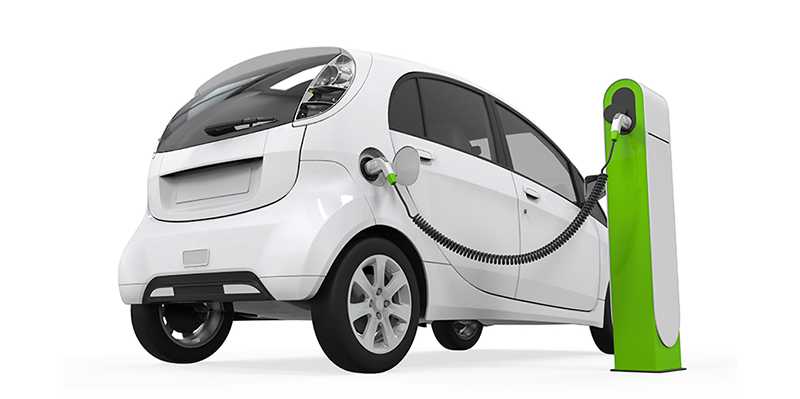Of batteries and fuel cells
In order to halt climate change, we need to transform our transportation system. Although people have voiced doubts about whether plug-in electric cars will live up to their promise of convenient, CO2-free transportation, the technology has already improved markedly and will continue to advance.
To protect the climate, we need to eliminate CO2 emissions. The second-largest source of these emissions is the transportation sector — primarily road transportation — which runs almost entirely on oil. We probably cannot replace more than a small fraction of that oil with sustainably produced biofuels. Hence, to the extent that people drive cars in the future, those cars will need to run on electricity produced from the sun, wind, and falling water. The cars will need to store the electricity either electrochemically in the form of batteries, or chemically in the form of a hydrogen fuel cell. So which should it be?
In December I decided I needed to understand the consumer perspective firsthand, so I purchased a battery car. It is a compact five-seater that works well for my family’s daily 50-km round-trip commute into Zurich for work and school. Overall my experience has been positive. The total cost of driving — the amortized purchase price, fuel, maintenance, and taxes — is a little bit less than for a comparable car with a combustion engine. It takes us ten seconds to plug it in every evening when we get home, which is more convenient than having to stop at a gas station every few days. The electric motor is quick and quiet, making this car the most fun to drive of any I have owned. The only drawback is the range: about 150 km given a mix of city and highway driving. So far we have been too timid to charge it at a public charging station, so we are confined to within a 75 km radius of our house. I see local driving as forming a natural synergy with public transportation used for the longer trips. But most people don’t see it this way, and that is understandable. Would Zurich residents really want to spend CHF 22,000 on a vehicle that will probably not get them across the Röstigraben, let alone the Gotthard?
Improvements are underway
I am confident that the range issue will disappear rather soon, as a result of better batteries and an increasingly dense network of public charging stations. Consider the car model I bought in December: the same model bought today features a slightly improved electronics system, extending its range by another 20 km. A major battery improvement is underway for 2017, which will give it a 300-km range. At that point, bellies and bladders will need a break before the battery does, creating an opportunity for a quick charge en route with little loss of convenience on even such long trips. Public charging stations are being added daily, and the chances are good that within a few years they will be everywhere they need to be. That is when the market can go from niche buyers like me to mainstream.
What about hydrogen fuel-cell cars? They already match what people expect from a car, with a range of at least 500 km and quick refueling at the pump. In the short run, however, they suffer from two major drawbacks. First, a sufficient network of hydrogen fueling stations simply doesn’t exist yet. This problem is more acute than for electric cars, which can also be charged at home, or plugged into any wall socket in an emergency (I keep a long extension cord in the trunk). Somebody needs to build the fueling network before the market can expand even at the niche level. Second, they are very expensive, with the least expensive model costing over CHF 60,000. If the market does expand, as it is doing for battery cars, the price will drop. I suspect that these two drawbacks will be overcome, and fuel cells can then compete with combustion engines. By that time, however, the range issue plaguing batteries will also have been solved. From the perspective of the average car driver, then, fuel cells will not offer any clear advantage over batteries in terms of convenience.
Not a question of either/or
Nonetheless, there are important reasons for governments to support the initial diffusion of fuel cells, with subsidies for fueling stations and vehicle purchases, and to continue to support battery vehicles as Switzerland does now with modest tax advantages. First, although fuel cells are unlikely to outperform batteries when it comes to cars, they will likely do so for long-distance trucks. Second, producing hydrogen through electrolysis may be the best way to balance out the fluctuation in power generation that comes from wind and solar, enabling a completely renewables-based power system. Battery cars can help to balance electricity load, since they offer some flexibility in terms of charging times, but hydrogen offers this collateral benefit to an even greater extent, since the hydrogen can be easily stored between the production point and the fuel pump. At the same time, however, battery vehicles are more efficient than fuel-cell vehicles, as long as the electricity charging those batteries is coming directly from the windmill or photovoltaic panel, and does not have to be stored somewhere else in between. Just as today we see both gasoline and diesel engines, the market is big enough for both batteries and fuel cells, and the two technologies can complement each other in the race to stop burning oil.

Comments
No comments yet